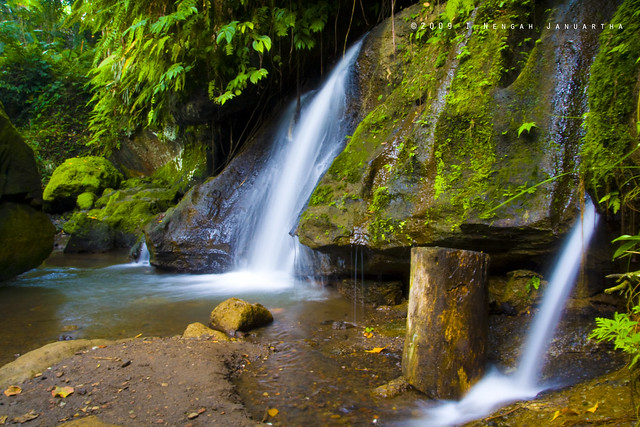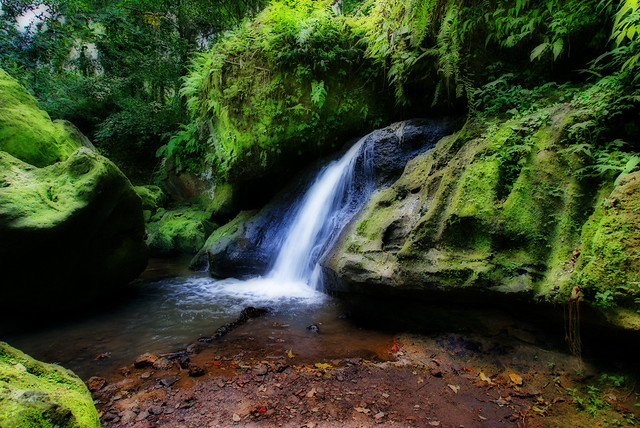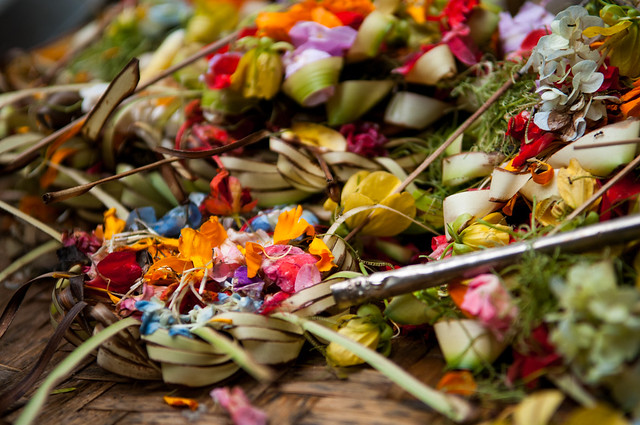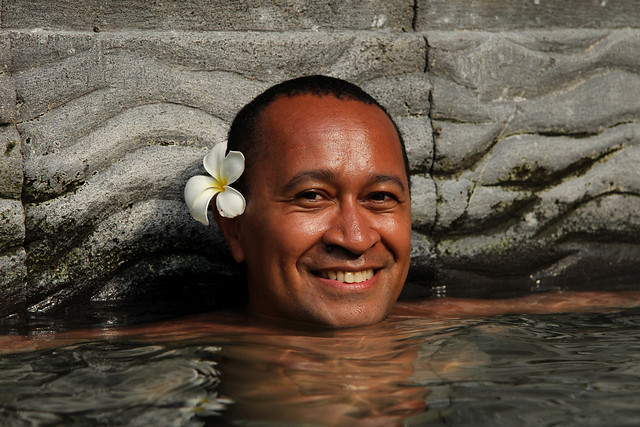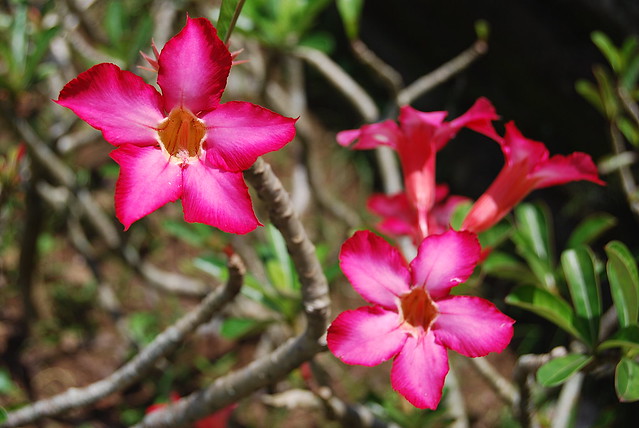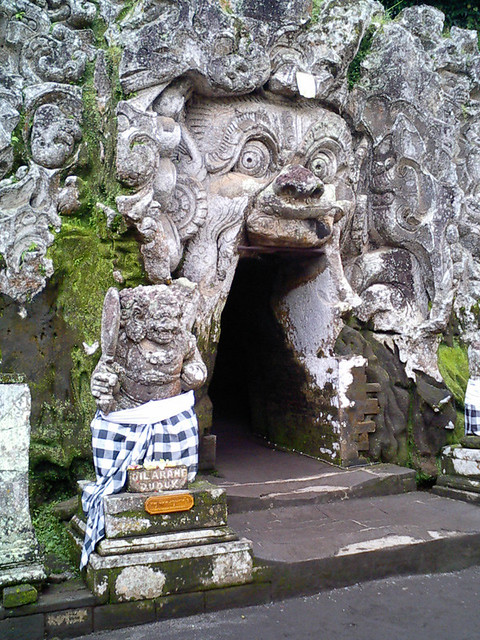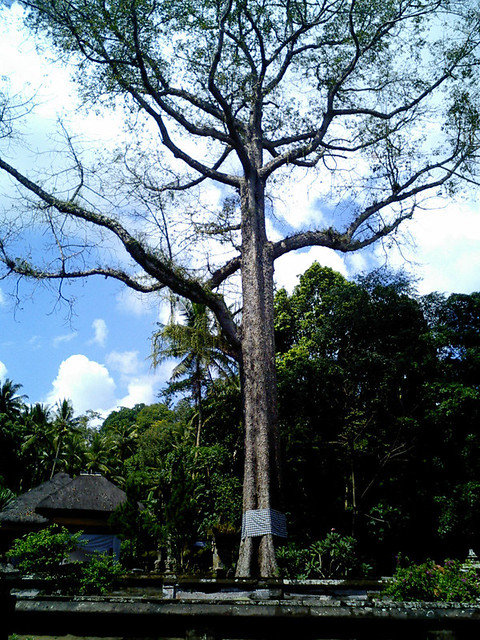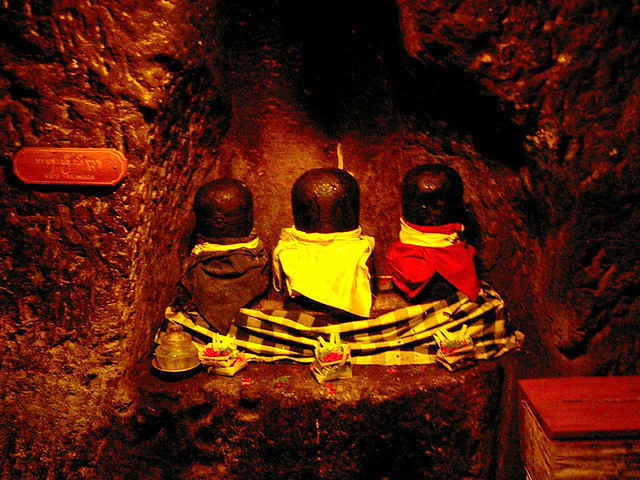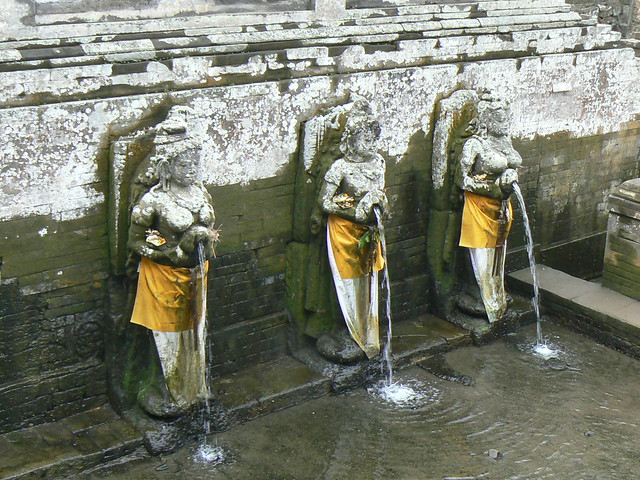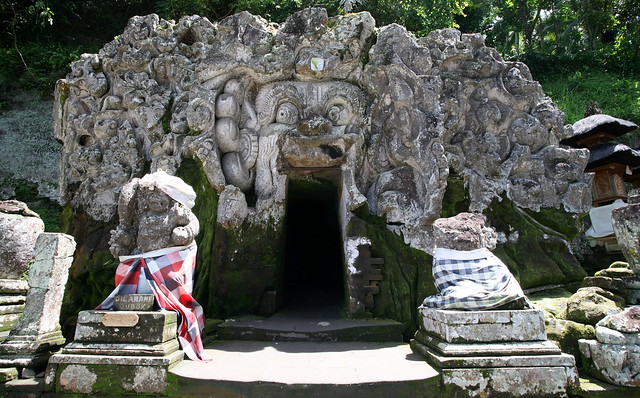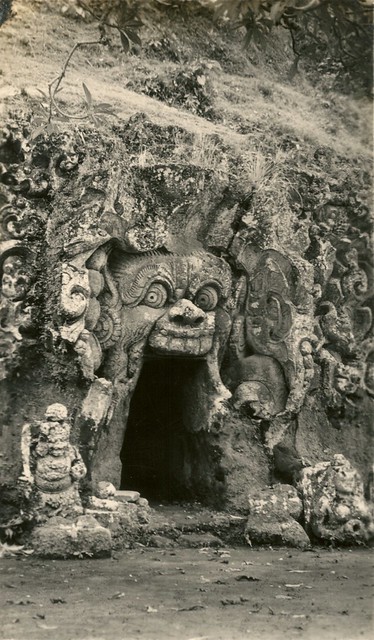If you are planning a trip to Bali and want to visit a truly ancient temple, Goa Gajah is the place for you. Goa Gajah means “elephant cave” and was named after the very old statues of the Hindu god Ganesha.
No one knows how old the site is, but it was certainly part of the Balinese empire of Bedahulu that ended in the 14th century. The Bali Agas in places like Tenganan say they were once part of this kingdom that lasted more than four centuries.
Getting to Goa Gajah
Goa Gajah is an archaeological site, a working temple and a well-known visitor’s destination just south east of Ubud. If you are staying in Ubud you head south down Jl Hanoman or Jl Raya Andong until you hit Jl Made Lebah/Jl Raya Teges and turn left.
The road changes its name a couple of times before becoming Jl Raya Goa Gajah and the whole trip is about three to four kilometres.
Travelling east along Jl Raya Goa Gajah you cross several creeks and come to a roadside parking area with a box office on the right. You buy a ticket to see the site and if you need to cover your knees, hire a green sarong. Bring your own if you don’t like green. Knees are not acceptable.
You then go down a somewhat damp and steep ramp, where sprouting ferns grow from every spare crack in the wall to your right. It seems safe enough, with a nice roughened surface and a guard rail on your left. If you peep over the side on your way down, you start to see the temple complex.
At the bottom there are lots of neatly stacked stones, which come from an ancient Buddhist temple that fell down into the ravine. The larger parts of the temple, too heavy to retrieve, are still down there.
It was a Buddhist stupa, similar to much bigger ones at Borobudur in Java and Angkor Wat in Cambodia, carved from the living rock. Archaeologists dated two Buddha statues from this temple back to the seventh or eighth centuries.
To your right is a much newer open sided Hindu temple, where the guides wait for visitors. A guide will find you fairly quickly if they see you looking around. You need to either fix a price straight away or let them know (politely) you don’t want a guide. Otherwise they will follow you around telling you things for 20 minutes and then demand you pay up to 200,000 rupiah.
The shrine to Ganesha and other Gods
Just past the piles of Buddhist stones is an ancient shrine in the cliff face. Like many Balinese shrines this one bears statues of three gods. Ganesha is the star of the show – he is the elephant-headed Hindu god of wisdom and learning, son of Shiva, but none of Bali’s Brahmin priests worship him today.
He must have been important to this early Hindu civilisation though, being the central deity in this most ancient Balinese temple. The statue is now badly eroded but dressed up in yellow silk bunting as a mark of respect.
On his right is Ratu Brayut, a sort of Buddhist goddess who was hideously cruel to children in her early life. When she converted to Buddhism she became a protector of children, raising many orphans. It is common for Balinese families have a statue of her in their house temples. Women with lots of kids in their care are sometimes called Ratu Brayut, in the same way English people might say “the old woman who lived in a shoe”.
Another goddess, Ratu Jempinis, is on Ganesha’s left. She was a queen from the ancient Balinese kingdom of Bedahulu and also related to Ganesha’s father god Shiva (Siwa in Balinese).
Goa Gajah, the elephant cave
If you keep following the cliff face you come to the “elephant cave”, where Goa Gajah itself is carved into the natural rock.
A churning, boiling mass of demons and animal covers the outside, the kind that would be quite at home in Dutch, Belgian or German religious art, dating back five or six hundred years ago.

Goa Gajah has parallels in Western Art. This is a section of The Temptation of St Anthony by Matthias Grünewald (1516).
Some say they are there to frighten bad spirits (and people) away from the cave. Perhaps they represent the passions you need to abandon before entering this sanctuary.
The cave mouth itself is like the jaws of hell in Breugel’s Dull Gret.

Goa Gajah has parallels in Western Art. This is a section of Dull Gret, a 1692 oil painting by Pieter Bruegel the Elder
The cave is a dark T-shaped passage way dug into the rock more than 1,000 years ago. The coolness hits you as soon as you enter and there is just enough light to see where you are going as you approach the main chamber.
Shrine to the cosmic penis and vagina
This is another very plain tunnel with a shrine at each end. Another crumbling statue of Ganesha fills the niche at the left and on the right is a collection of three Lingham and Yoni statues. This abstract Indian way of depicting the penis and vagina in sexual intercourse is still used in shrines to Shiva.
As you walk back into the light you may notice several empty niches in the tunnel wall. These may have been for more statues, but are now available for meditation. The guides say you can arrange to sit in one of them all night.
The temple bathing pool
Outside is a bathing pool, much like the one at Tirta Empul water temple at Tampaksiring, only older. Pilgrims bathed there under the seven fountains that poured from statues, representing the seven great rivers of India. They were buried under a thick layer of rubble and earth until archaeologists carefully brought them to light again in the 1950s. Six of the seven statues are still in place.
Easier access to the Buddhist section downhill
Behind the bathing pool is a large open shed, used only once a year for a festival. There’s not much to see, but if you don’t like climbing down stairs, it leads to an easier way down to the Buddhist part of the site. Walk through the shed and at the back and you will see a rice field with a concrete causeway leading to the other side of the ravine. If you follow this you will come to several little shops, built into the side of the hill. Needless to say there are plenty of carved statues of Ganesha on offer.
An elderly couple with a mangy dog keep the newer temple clean and tidy while their daughter sells coconuts and bottled drinks nearby. She offers to take tourists to a “jungle temple” about one kilometre further into the trees. If you are a silver-haired gent, you’ll suddenly wish you had not left your partner behind at the home stay. There is something about a man in his fifties disappearing down a jungle track with a local woman that just looks suspect.
Before the track dematerialises into the jungle there are more Bosch-like faces carved into the moss covered rocks. Note: bring a friend to visit the jungle temple next time.
There are several staircases and bridges leading back up to the Hindu part and level ground where the Goa Gajah guides work.
The Goa Gajah guides
Now to inform you about the Goa Gajah guides, a permanent presence at the site after someone stole one of the Buddha statues 14 years ago. Apparently they are there to deter thieves and they’ll tell you they have no other income besides visitor tips. They won’t take you to the Buddhist shrine below the temple complex, which as we mentioned has its own guide, and definitely not to the jungle temple.
Ubud taxi drivers – people worth listening to
At this point it is worth mentioning Ubud taxi drivers and the value of booking accommodation before you leave home.
If you ask your hotel or homestay to organise an airport transfer, you can then ask the driver to take you to other places later for a fixed daily fee. Brata1 Homestay has drivers that wait for you when your plane touches down and those same drivers will caution you about the guides at Goa Gajah. You may like to print out this story and take it with you as you walk around the site. If you still have questions, by all means get yourself a guide!
Entry fee and requirements
The entry fee is 15,000 rupiah for adults and 7,500 for kids with free sarong hire. You are expected to dress modestly (knees, chest and shoulders covered) and as with all Balinese temples, ladies are implored to stay away if it is that time of the month. Access is easy for a moderately fit person but there are plenty of stairs.



 (15 votes, average: 4.67 out of 5)
(15 votes, average: 4.67 out of 5)

















